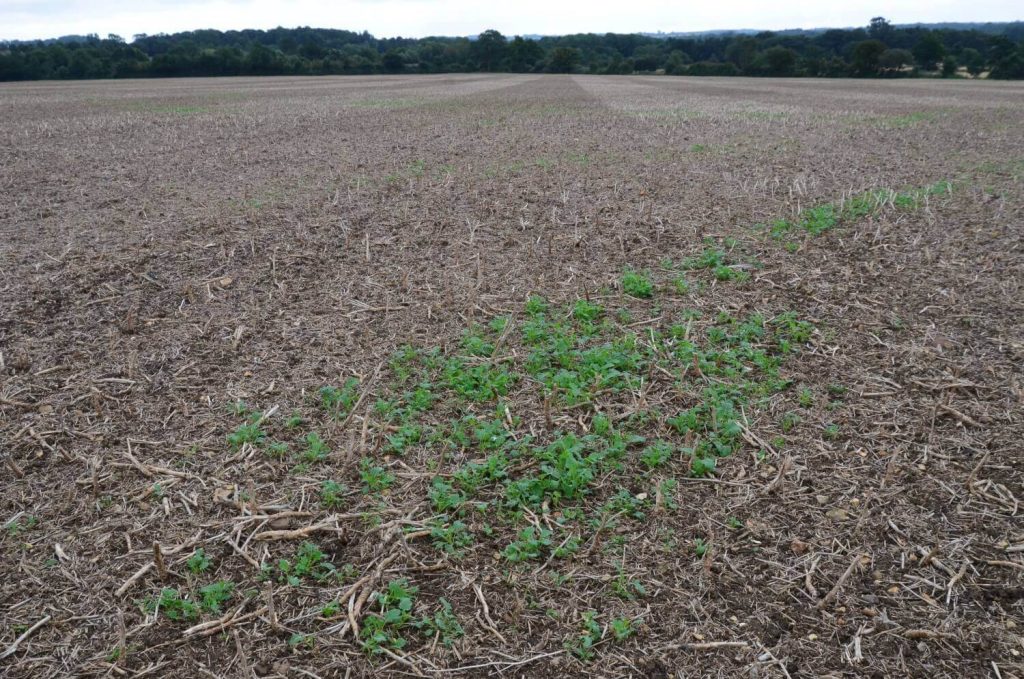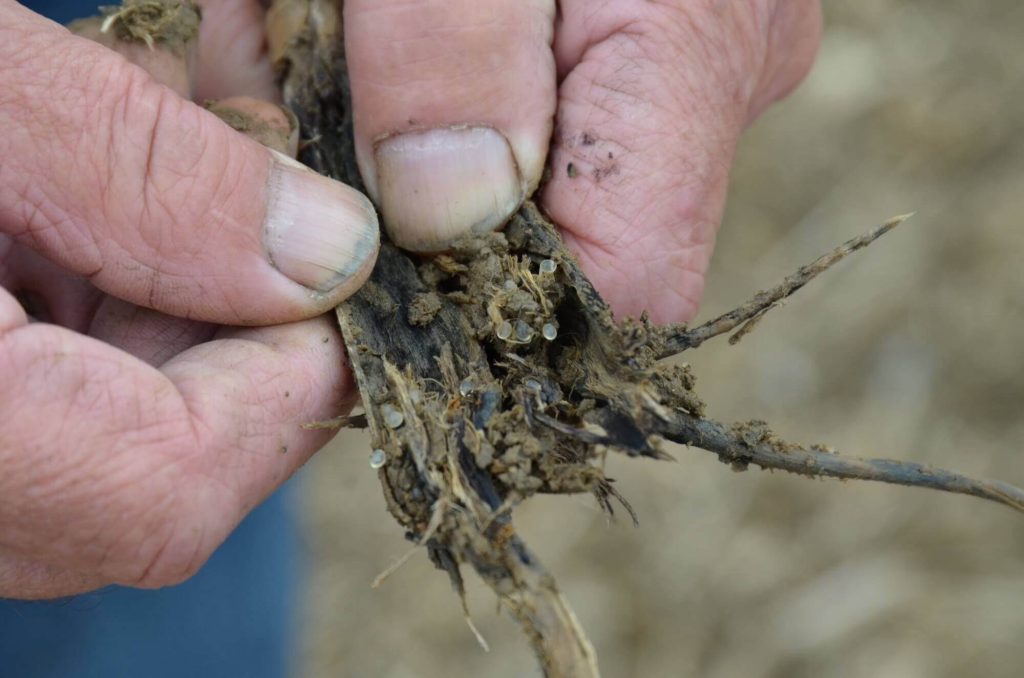
Rain has stopped harvest so Jeff has taken the opportunity to inspect his oilseed rape stubble for slug activity. The field was raked with the Claydon 15m Straw Harrow, straight after harvesting, to eliminate weeds and volunteers. Harrowing also creates a fine tilth which encourages more weeds and volunteers to germinate which can then be destroyed by a following pass with the straw harrow. This type of stubble management is also very effective at disturbing slugs and their eggs before sowing the next crop.

To check for slug activity, wait for a damp day and then clear the osr residues which haven’t been moved for a few days – check the rape stalks and underneath the residue for adult and juvenile slugs and slug eggs. Juvenile populations can build up in stubble between harvest and seeding the next crop and they can decimate wheat seeds. The best way to reduce slug populations is to straw harrow the field on a sunny day. This will expose slugs and their eggs to sunlight which will dessicate them.

Whatever the establishment system you are using, slug control is very important in any direct drill and zero till situation or where you are looking to use less tillage on rape stubbles. Instead of relying on slug pellets, also look at methods of mechanical and cultural control. The Claydon Straw Harrow range comprises the 3m and 7.5m mounted and 12.5 and 15m trailed models. The rakes are robustly built and operate at speeds of up to 20-25 km/h for maximum effect. There are no pressure points on the flexible wrap-around tines so you can turn on the headlands, so avoiding leaving piles of straw at the ends of the fields to harbour more slugs. When conditions are very dry and hard, the 6m Claydon TerraStar light rotary cultivator is an effective alternative to the Straw Harrow.


